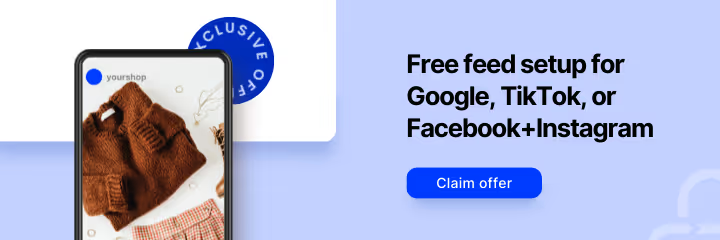Attracting visitors to your ecommerce site is only the first step. The true growth of your business lies in converting these visitors into loyal customers. By leveraging the right data and tools, you can target your ideal audience with personalized messages that boost traffic, increase conversion rates, and build strong customer relationships. These strategies not only enhance customer loyalty but also maximize your marketing ROI.
Discover how to implement these powerful lead-generation tactics and open new sales opportunities for your ecommerce business. Stay ahead of the competition and achieve significant growth by mastering the art of lead generation.
Understanding Lead Generation in Ecommerce
In ecommerce, effective lead generation is about more than just securing one-time sales; it’s about building lasting customer relationships that contribute to ongoing business growth. This approach shifts the focus from immediate transactions to fostering loyalty and increasing customer lifetime value.
By engaging potential customers early and providing personalized experiences, you can cultivate a connection that goes beyond a single purchase. This strategy not only drives repeat business but also strengthens your brand's long-term success.
Positive Impact of Effective Lead Generation

Increased Traffic and Higher Conversion Rates
Targeted lead generation strategies attract more visitors to your website. By focusing on high-quality prospects, you increase the likelihood of turning visitors into buyers, leading to better conversion rates.
Improved Customer Engagement and Loyalty
Engaging and personalized lead-generation tactics strengthen customer relationships. When customers feel valued and understood, they are more likely to remain loyal. Effective lead nurturing fosters long-term loyalty, resulting in repeat business and sustained growth.
Better ROI on Marketing Efforts
Well-executed lead generation strategies are cost-effective. By optimizing your approach, you can achieve better returns on your marketing investments. For example, tailored email campaigns or personalized ads can yield higher engagement and conversion rates, maximizing your ROI.
[Look how accurate data feed management can help you deliver personalized messages and improve conversion rates, fostering customer loyalty.]
Common Lead Generation Mistakes to Avoid
Poor Targeting and Segmentation
Failing to accurately target and segment your audience can lead to irrelevant leads and lower conversion rates. It's essential to understand who your ideal customers are and tailor your efforts to meet their needs and preferences.
Ineffective Use of Landing Pages
Poorly designed or optimized landing pages can hinder lead generation. Ensure your landing pages are visually appealing, user-friendly, and have clear calls to action to turn visitors into interested prospects.
Neglecting Follow-Up and Nurturing Leads
Not maintaining engagement with leads can result in lost sales opportunities. Consistent follow-up and nurturing are crucial to keep potential customers interested and guide them toward making a purchase.
[Read more about audience segmentation techniques that ensure your marketing efforts are tailored to the right people.]
Ecommerce Lead Gen 101
.webp)
Lead generation in ecommerce is about identifying and attracting potential customers, guiding them through the buying process, and converting them into paying customers. This involves understanding who your target audience is, where they spend their time online when they are most likely to engage, and why they need your products.
Lead generation starts with capturing interest in your products through various channels such as social media, email marketing, and search engines. The process involves creating compelling content and offers to engage potential customers, nurturing their interest, and ultimately converting them into leads. In ecommerce, this conversion often means capturing contact information or driving them to make a purchase.
Effective lead generation hinges on three critical components:
- Targeting: Identify and segment your audience based on demographics, behavior, and preferences. Use data analytics to pinpoint who is most likely to be interested in your products.
- Engagement: Use personalized content, such as product recommendations, email newsletters, and social media posts, to keep potential customers interested. Engagement strategies should be tailored to the preferences and behaviors of your target audience.
- Conversion: Optimize your website and landing pages to facilitate conversions. This includes clear calls to action, easy navigation, and streamlined checkout processes.
Modern lead generation in ecommerce leverages several trends:
- AI and Machine Learning: Personalize marketing efforts and predict customer behavior.
- Influencer Marketing: Reach broader audiences through trusted voices in your niche.
- Chatbots and Live Chat: Provide instant customer engagement and support.
- Interactive Content: Use quizzes, polls, and interactive videos to engage users.
[See how AI-powered data feed management can personalize customer experiences and improve lead conversion.]
Several tools and techniques are fundamental for effective lead generation:
- CRM Systems: Manage customer data and track interactions to personalize marketing efforts.
- Email Marketing Platforms: Send targeted email campaigns to segmented audiences.
- Social Media Advertising: Use platforms like Facebook, Instagram, and LinkedIn to reach specific demographics with tailored ads.
- SEO and Content Marketing: Optimize your website for search engines and create valuable content to attract organic traffic.
- Landing Page Builders: Create optimized landing pages that convert visitors into leads.
- Analytics Tools: Track and analyze the performance of your lead generation efforts to make data-driven decisions.
By incorporating these tools and techniques, you can streamline your lead generation process, improve efficiency, and achieve better results.
[Read more on how structured product data impacts SEO and lead generation.]
How to Build a Target Customer List for Your Ecommerce Business

Step 1: Define Your Target Audience
Understanding your ideal B2C customer is crucial. Use market research, customer surveys, and social media insights to identify and segment your audience based on demographics, behavior, and preferences. This ensures your marketing efforts are tailored to attract the right people.
Step 2: Create Compelling Content
Content is key to attracting B2C leads. Focus on product videos, customer testimonials, and lifestyle blog posts that resonate with your target audience. High-quality, engaging content tailored to your customers’ interests will draw them in and keep them engaged.
Step 3: Optimize Your Website for Lead Generation
Ensure your website is designed to convert visitors into leads. Use visually appealing landing pages, clear call-to-action buttons, and easy-to-navigate forms. A seamless user experience (UX) and mobile optimization are essential for capturing leads from B2C customers.
Step 4: Leverage Social Media and Email Marketing
Social media platforms like Instagram and Facebook are great for engaging potential leads. Pair this with email marketing to nurture and convert leads. Craft personalized email campaigns to make your messages more relevant and engaging.
Step 5: Use Lead Magnets and Gated Content
Lead magnets such as discount codes, free samples, and exclusive access to new products can entice visitors to share their information. Gated content, where valuable resources are offered in exchange for contact details, is another effective strategy for capturing qualified leads.
Step 6: Implement Marketing Automation Tools
Use marketing automation tools like automated email responders, retargeting ads, and CRM systems to streamline your lead generation process. These tools help with lead scoring, nurturing, and tracking, making your efforts more efficient and effective.
Step 7: Analyze and Optimize Your Lead Generation Efforts
Track key metrics such as conversion rates, customer acquisition costs, and lifetime value to evaluate your lead generation strategies. Continuously optimize your efforts based on data insights to improve results and adapt to changing customer behaviors.
Step 8: Export Your Target Customer List
Export your customer list from various platforms, ensuring the data is clean and well-organized. This list will be essential for driving sales and engagement in your future marketing efforts. Next, we’ll explore how to leverage this list effectively.
Putting Your Customer List to Work for You
Leveraging your customer list effectively can significantly enhance lead generation and sales. By using various marketing channels, you can engage your audience, deliver personalized messages, and drive conversions.
Email Marketing Channels
Klaviyo
Klaviyo integrates seamlessly with CRM systems to create personalized email marketing campaigns. It offers powerful segmentation, automation, and analytics features that optimize your email outreach. By targeting specific segments of your customer list, you can send relevant content that resonates with each group, increasing engagement and conversion rates. Klaviyo's detailed reporting allows you to measure the success of your campaigns and adjust your strategies accordingly.
Retargeting Channels
Criteo
Criteo uses customer data to deliver personalized ads across multiple platforms. It excels in dynamic retargeting, which adjusts ad content based on user behavior and preferences, maximizing the chances of conversion. Criteo's AI-driven engine analyzes browsing patterns and purchase intent, ensuring your ads are always relevant. This continuous optimization keeps your brand in front of potential customers who have shown interest, driving them back to your site to complete their purchases.
AdRoll
AdRoll offers robust retargeting and cross-channel marketing capabilities. By utilizing your customer list, AdRoll can create tailored ad campaigns that drive conversions. AdRoll’s platform supports seamless integration with social media, display ads, and even email, providing a cohesive retargeting strategy. This ensures your ads reach the right audience across various platforms, reinforcing your message and increasing the likelihood of conversions.
Social Media Advertising
Facebook Ads
Facebook Ads allows businesses to upload customer lists for custom audience targeting. You can create lookalike audiences to reach new potential customers who share similarities with your existing ones. With Facebook's detailed targeting options, you can ensure your ads are seen by the most relevant users. Additionally, the platform’s analytics tools provide insights into ad performance, helping you adjust your campaigns for maximum impact and engagement.
Explore GoDataFeed’s Solutions
Integration with Major Marketing Channels
GoDataFeed integrates with platforms like Klaviyo, Criteo, AdRoll, and Facebook Ads to streamline the process of using customer lists. This integration simplifies managing and optimizing product feeds across multiple channels, ensuring your marketing efforts are both efficient and effective. GoDataFeed’s dynamic data feeds adjust product information in real-time, allowing you to maintain accurate listings and avoid errors. By leveraging GoDataFeed’s comprehensive solutions, you can enhance your lead generation strategies, improve campaign performance, and drive better results for your ecommerce business.
Summary
Effective lead generation is key to opening new sales opportunities. By targeting the right audience, engaging them with personalized content, and optimizing your strategies, you can drive growth and enhance customer loyalty.
Take advantage of GoDataFeed’s integrations with platforms like Klaviyo, Criteo, AdRoll, and Facebook Ads for advanced lead generation. These tools streamline your marketing efforts and optimize product feeds across multiple channels. For more information and support, visit GoDataFeed or contact us at support@godatafeed.com.






%20).webp)